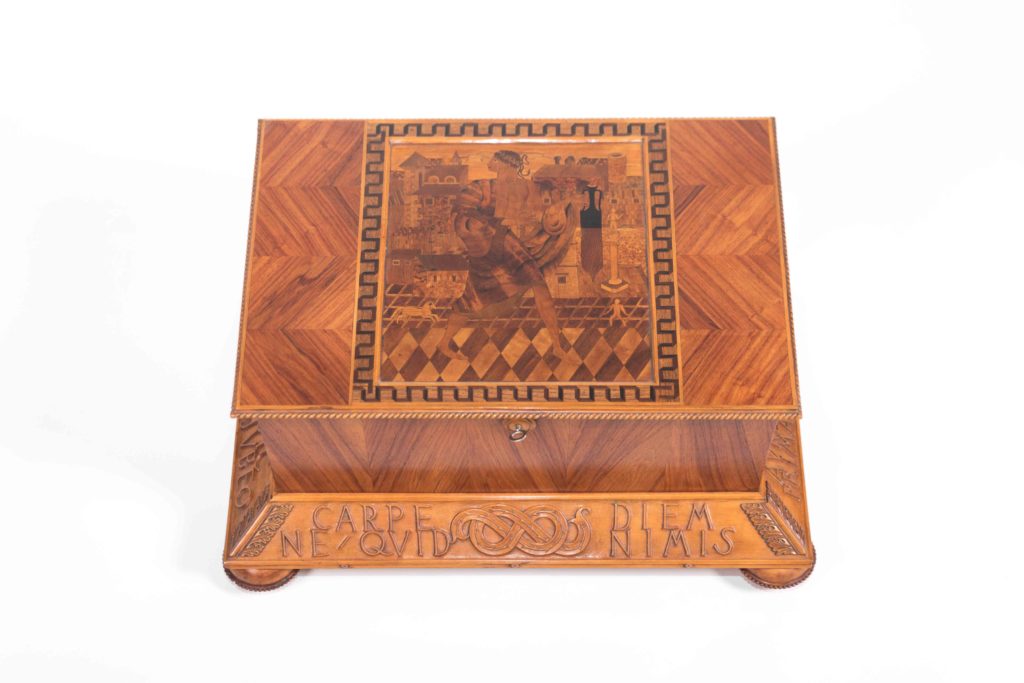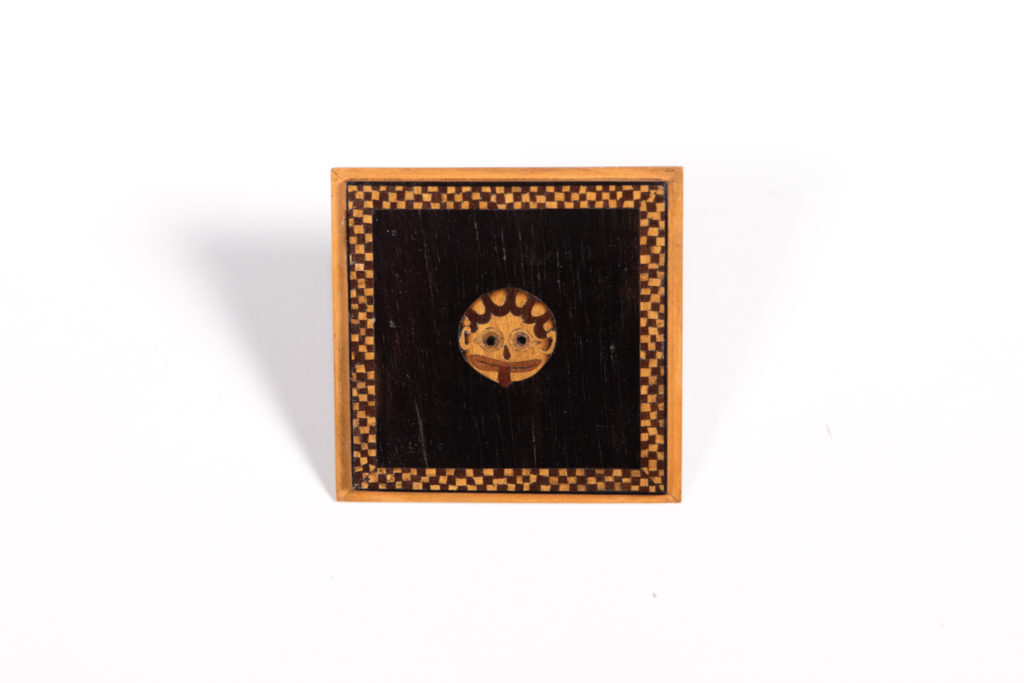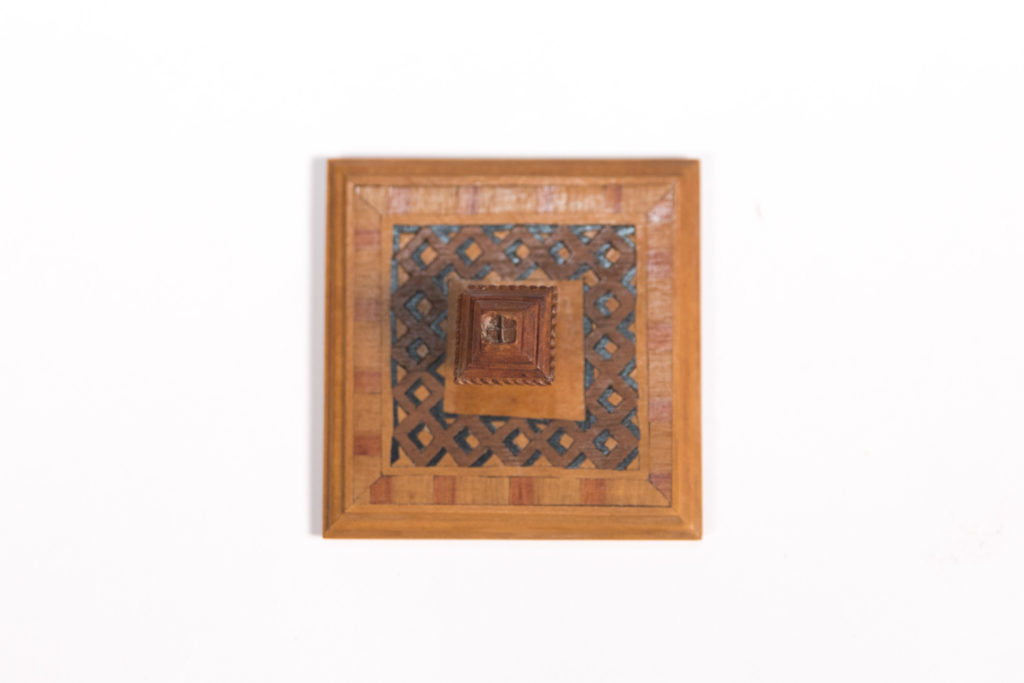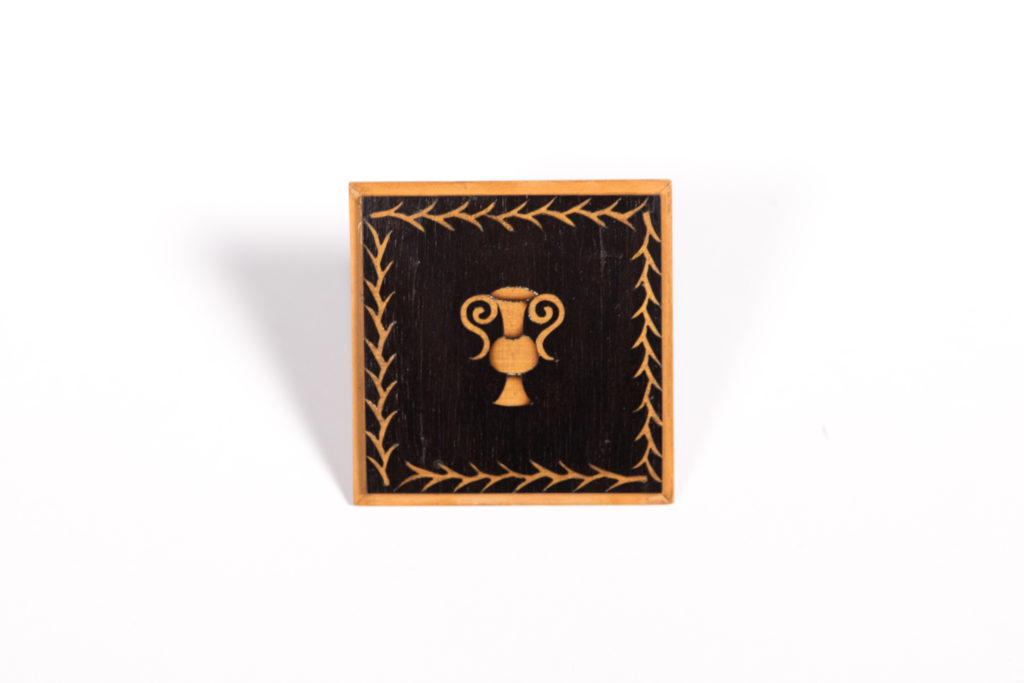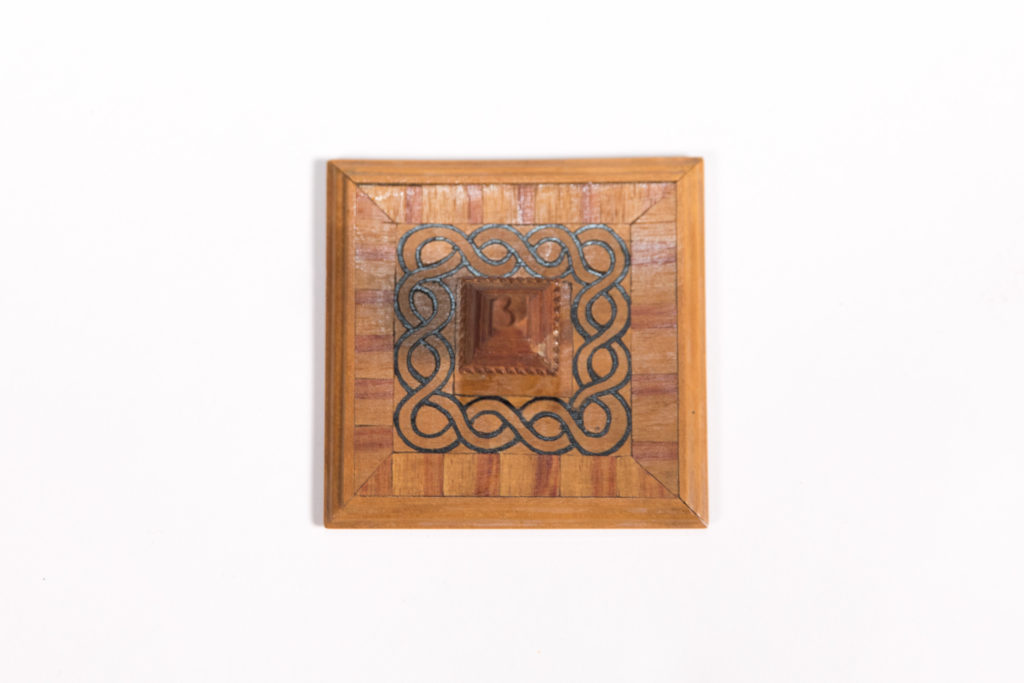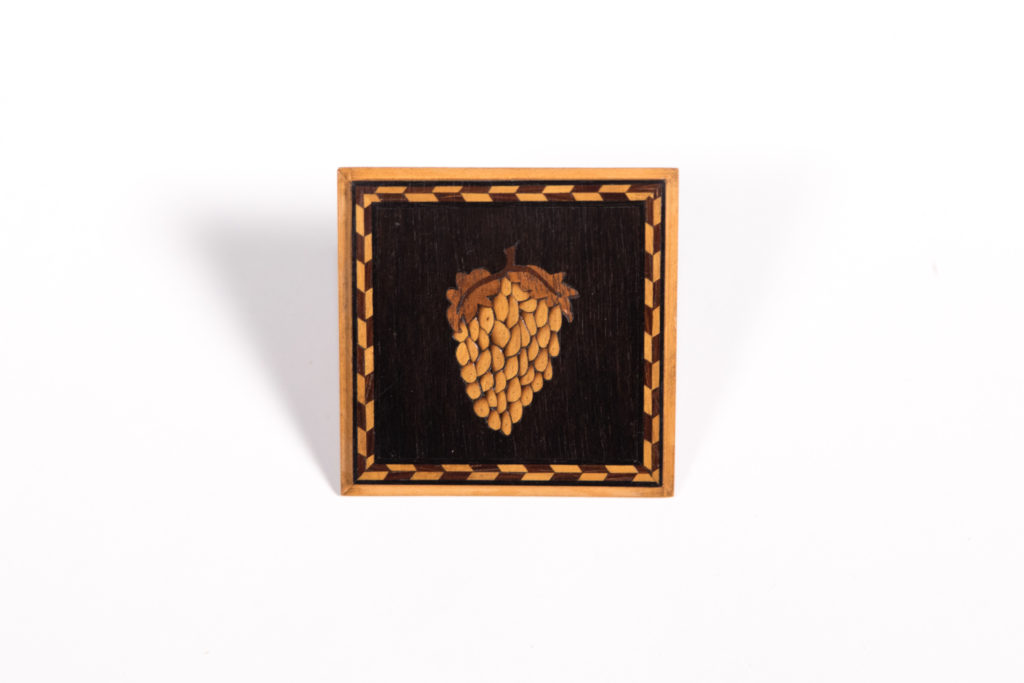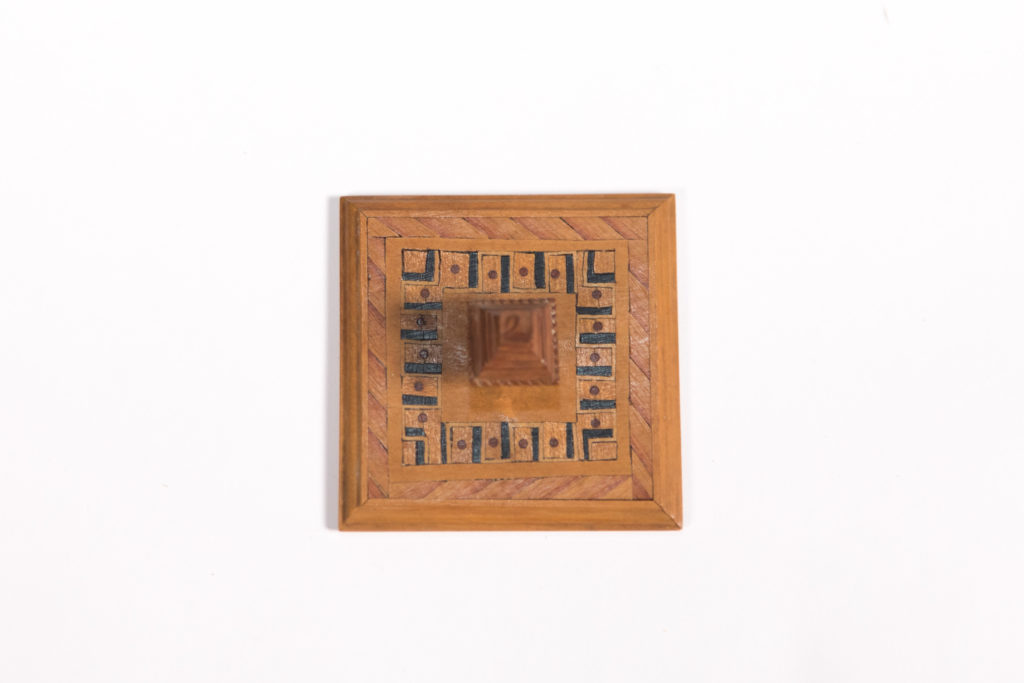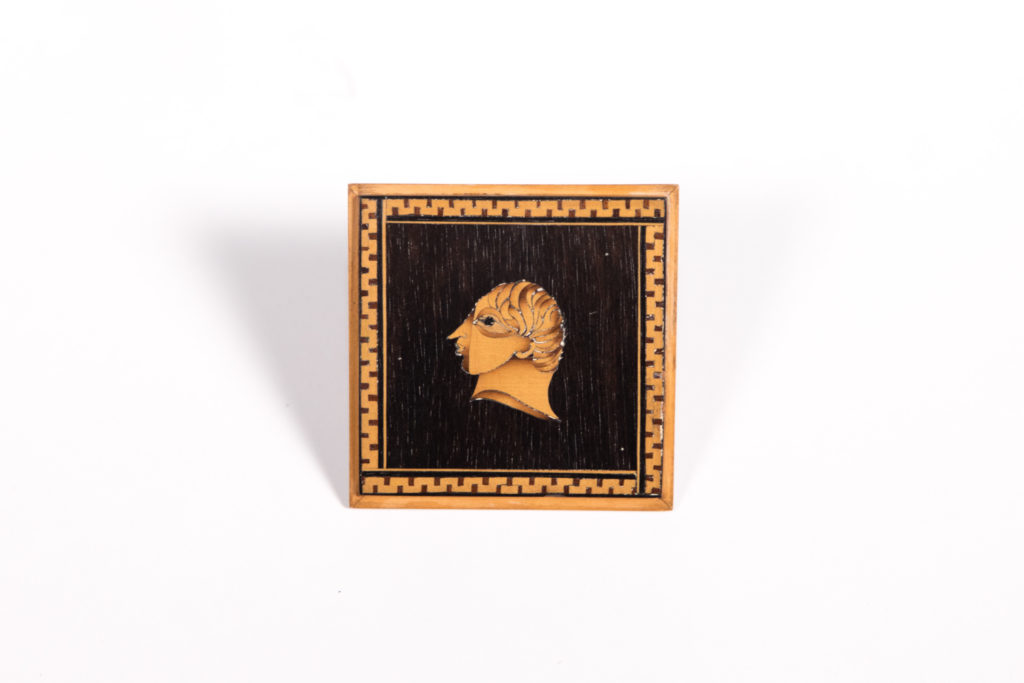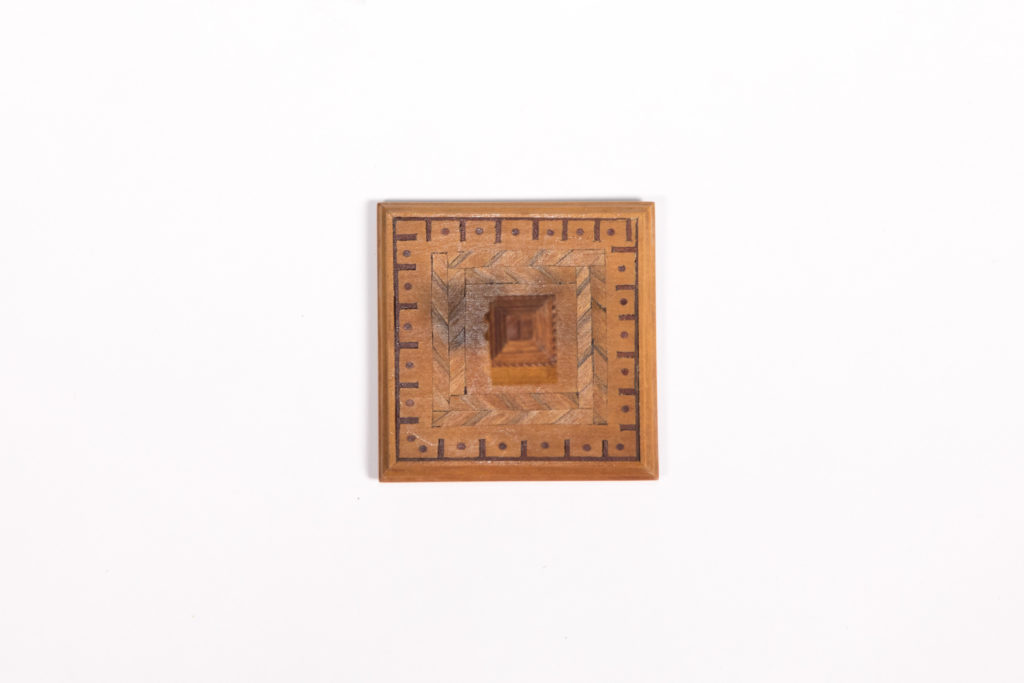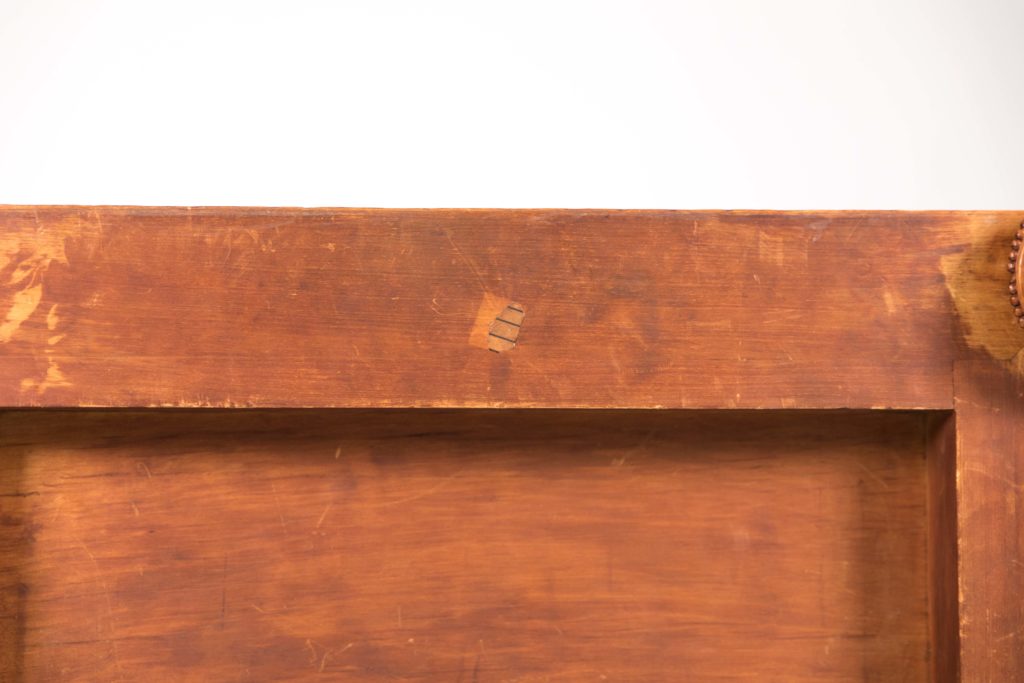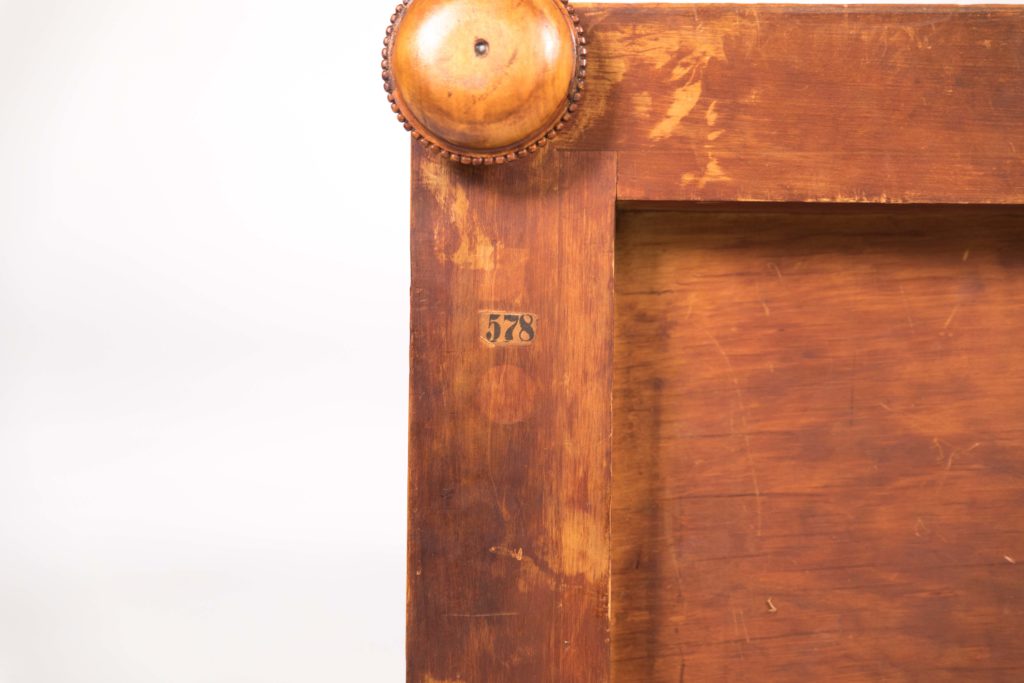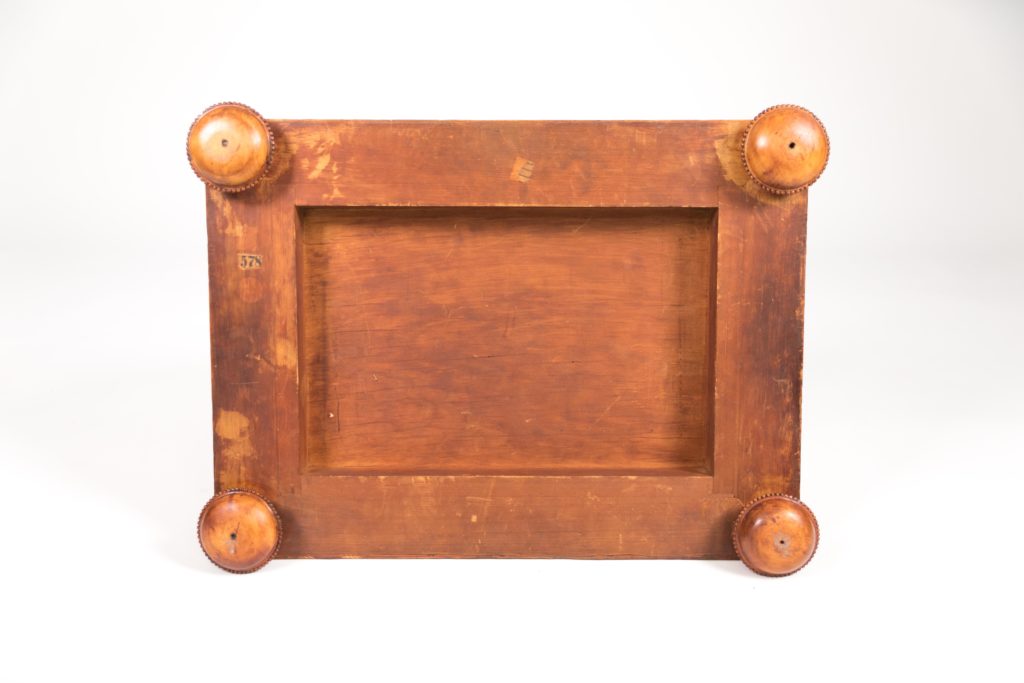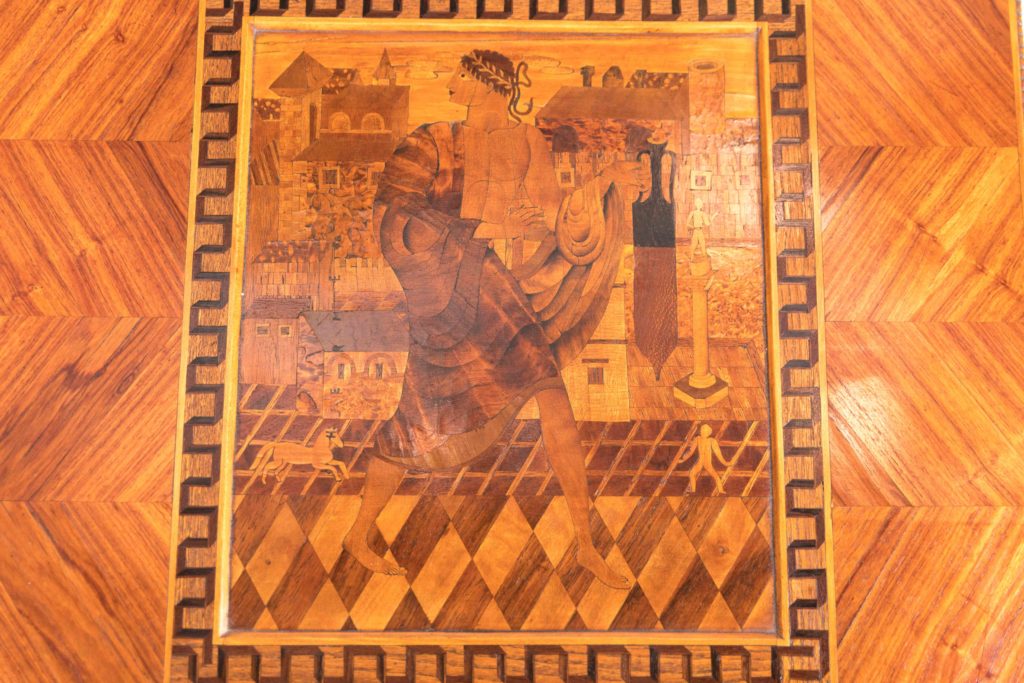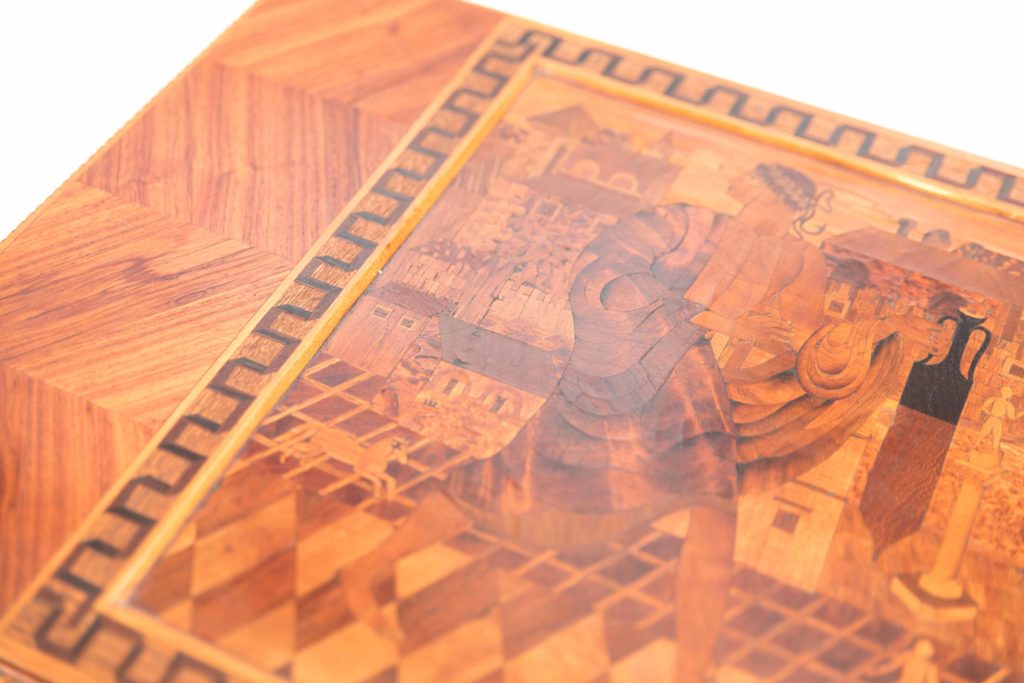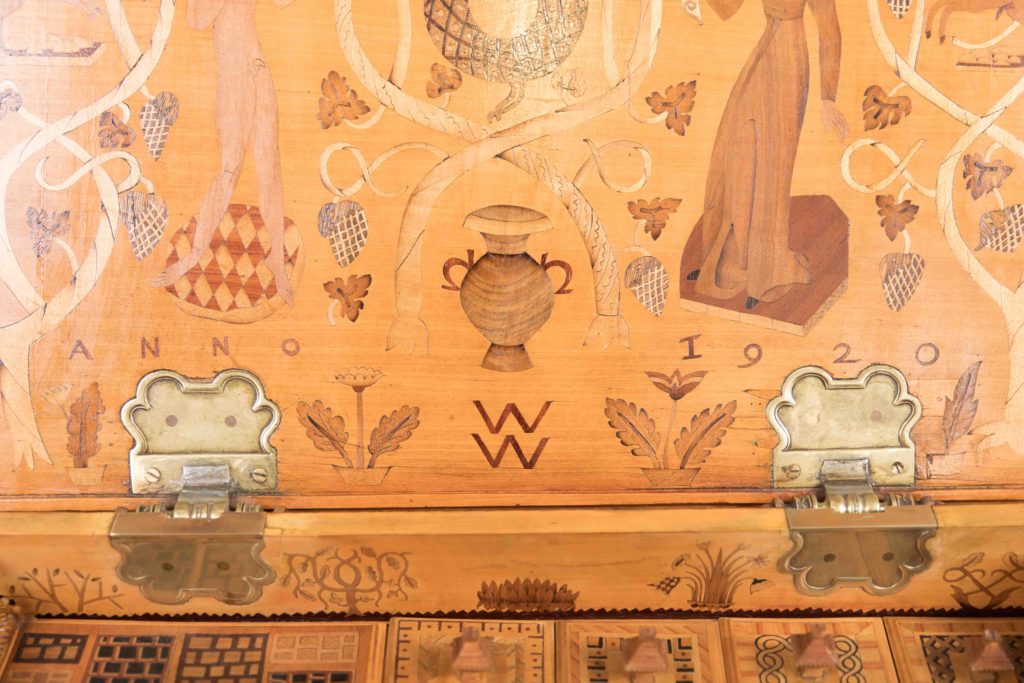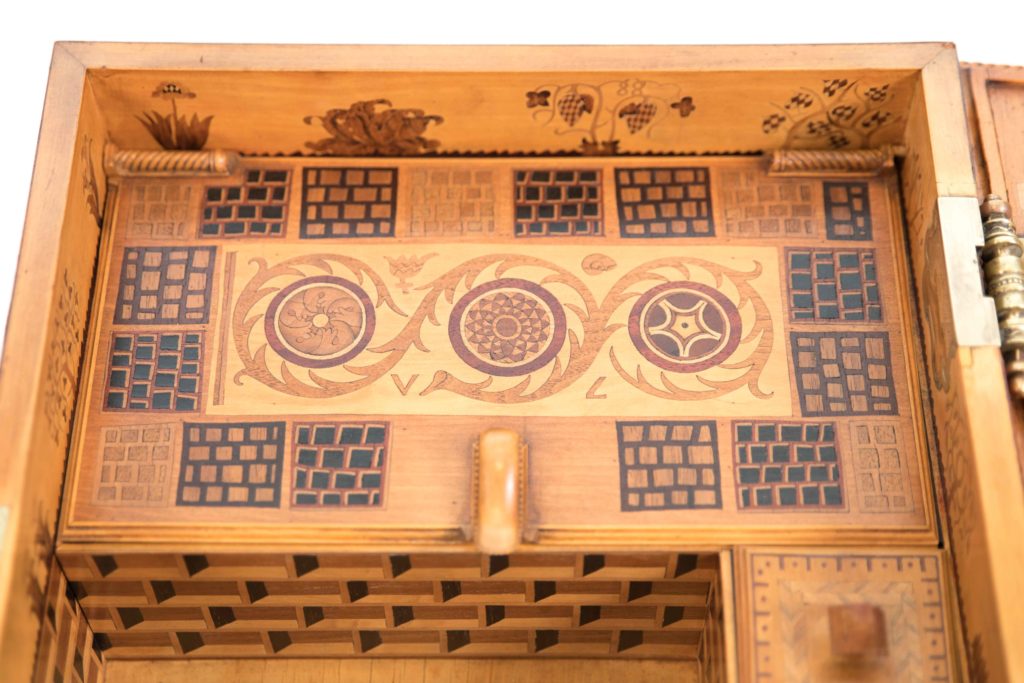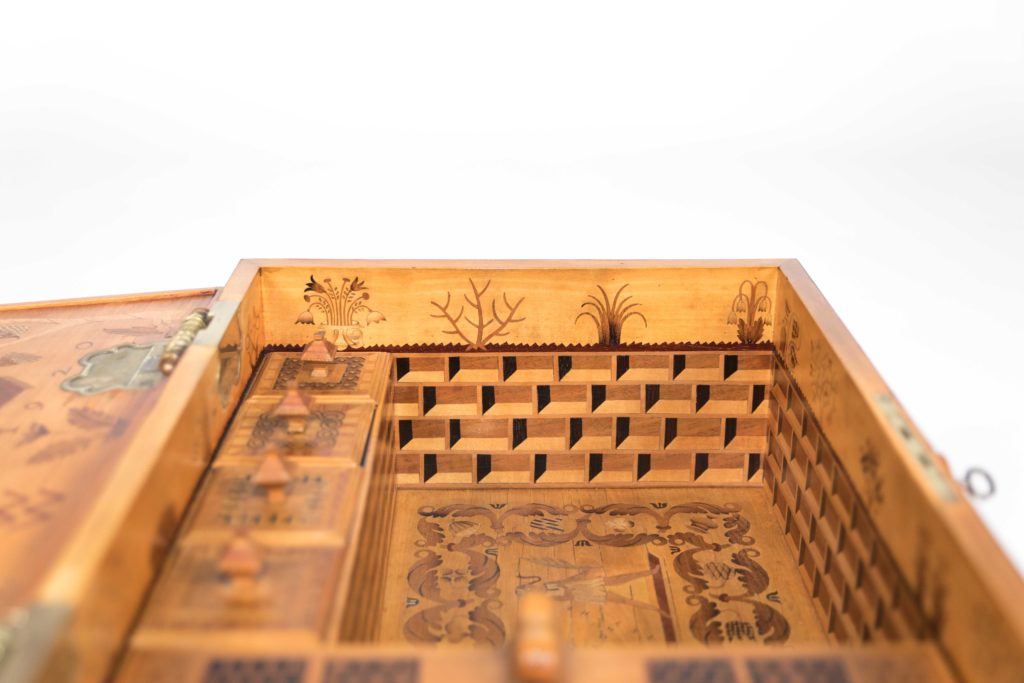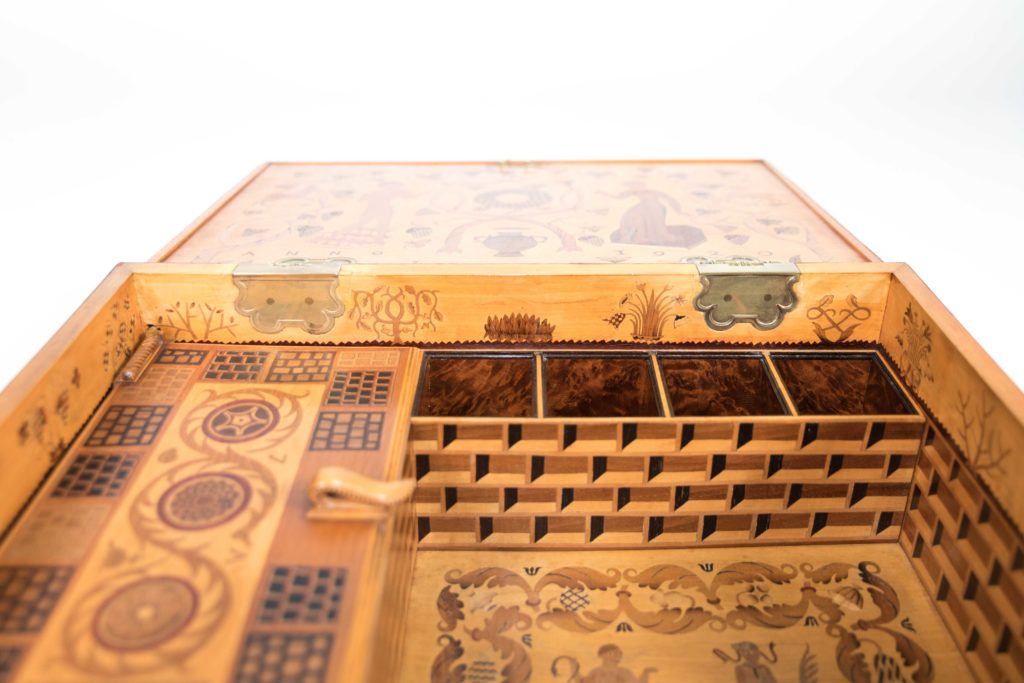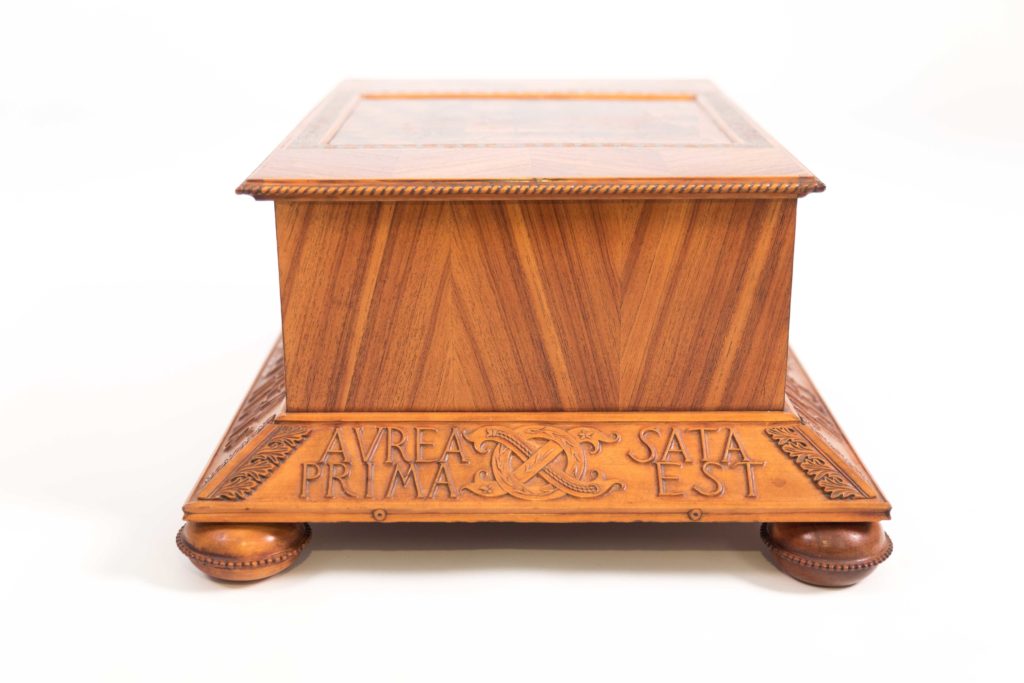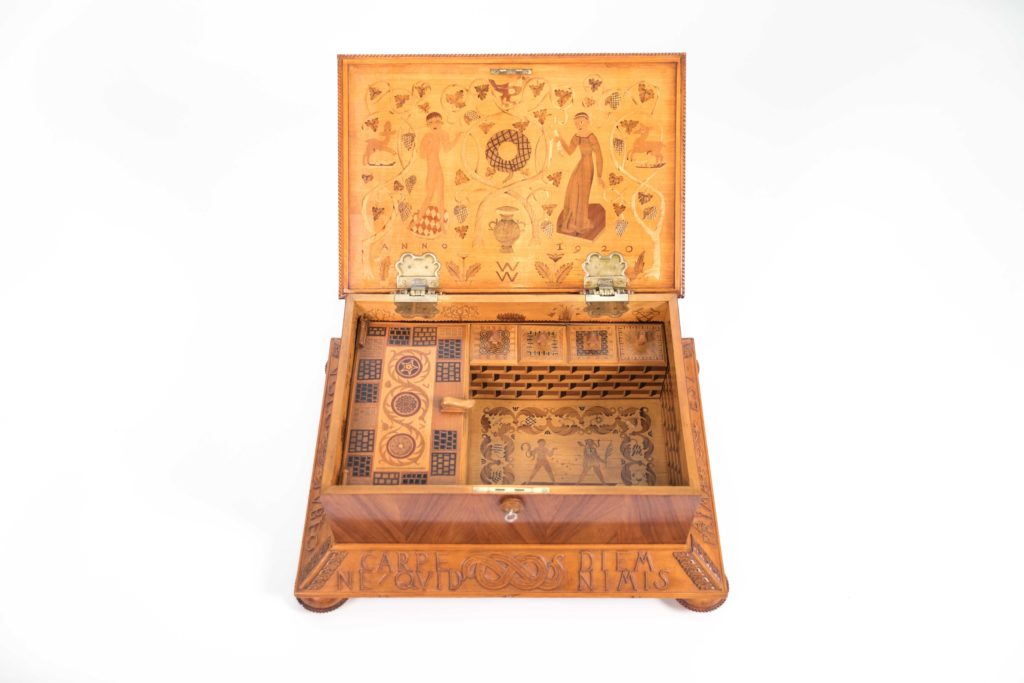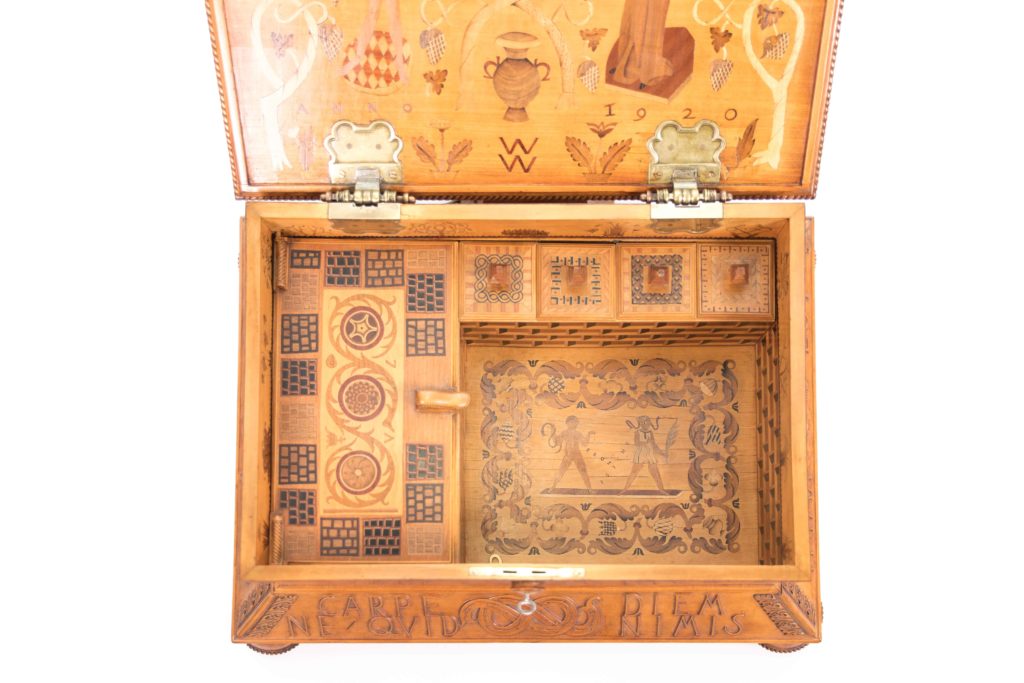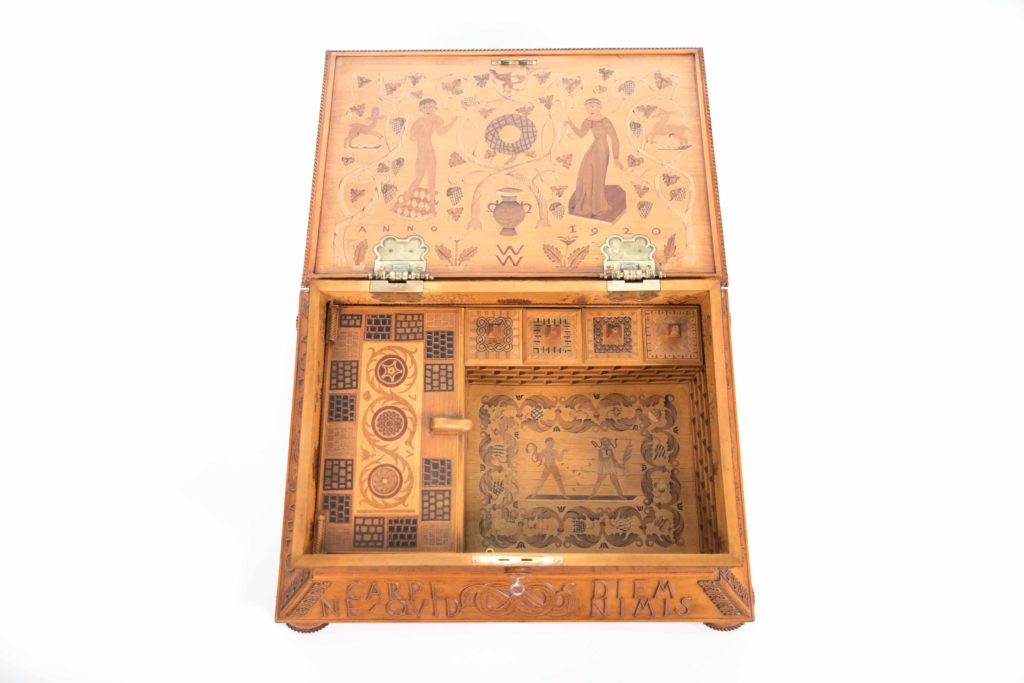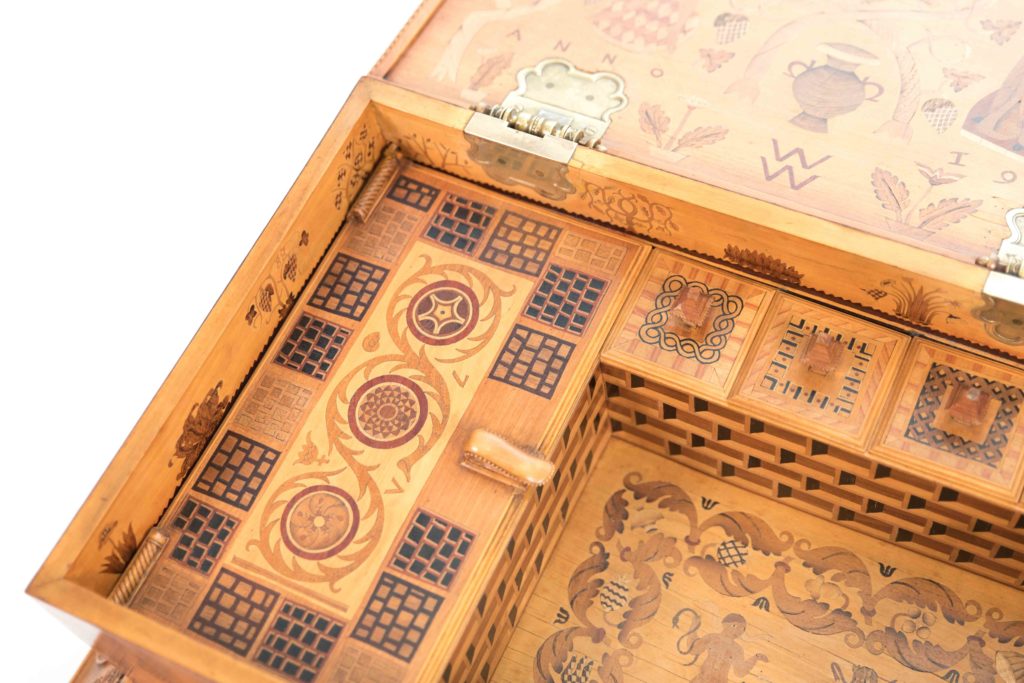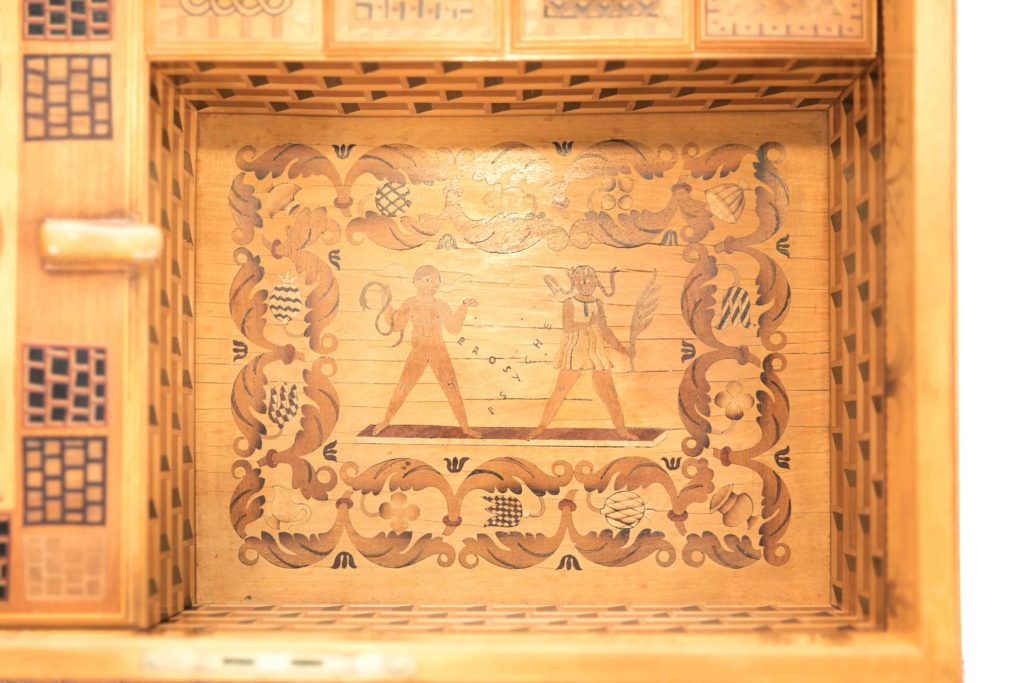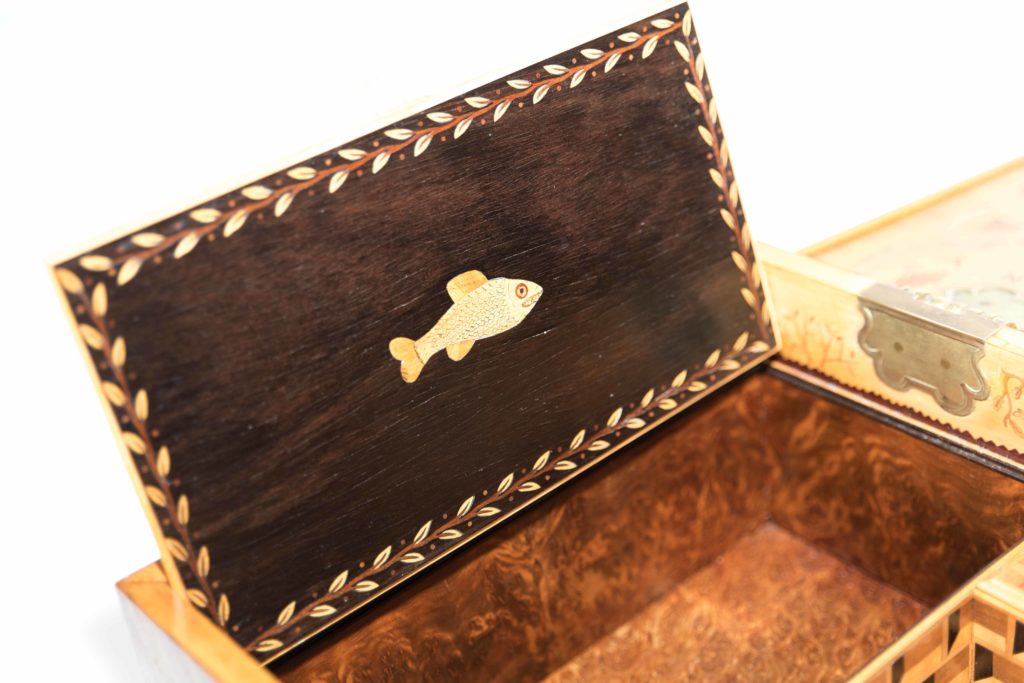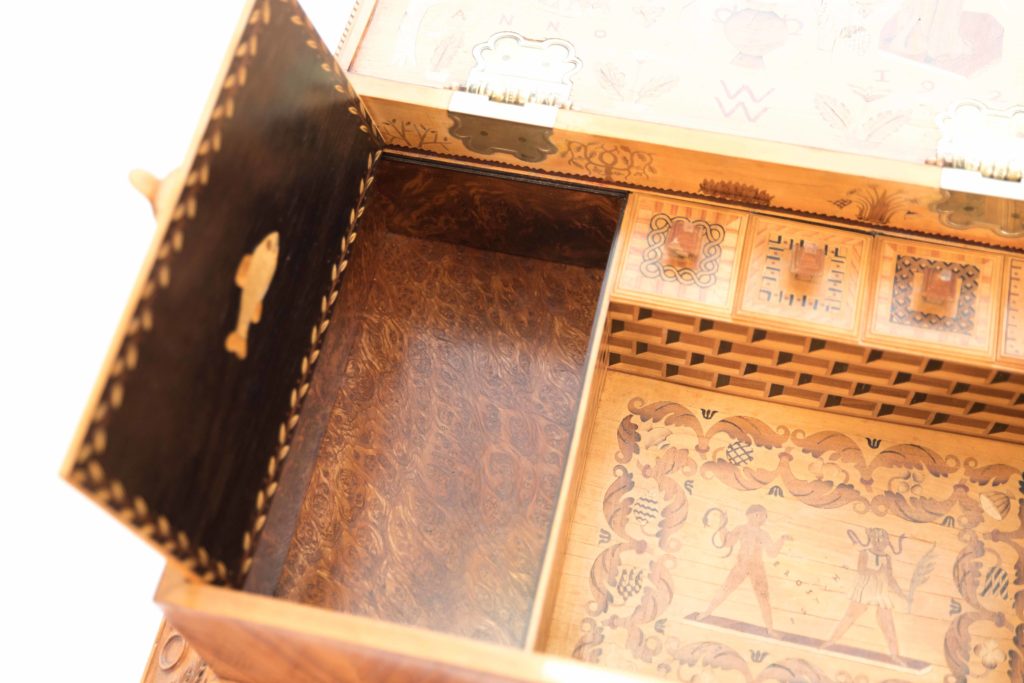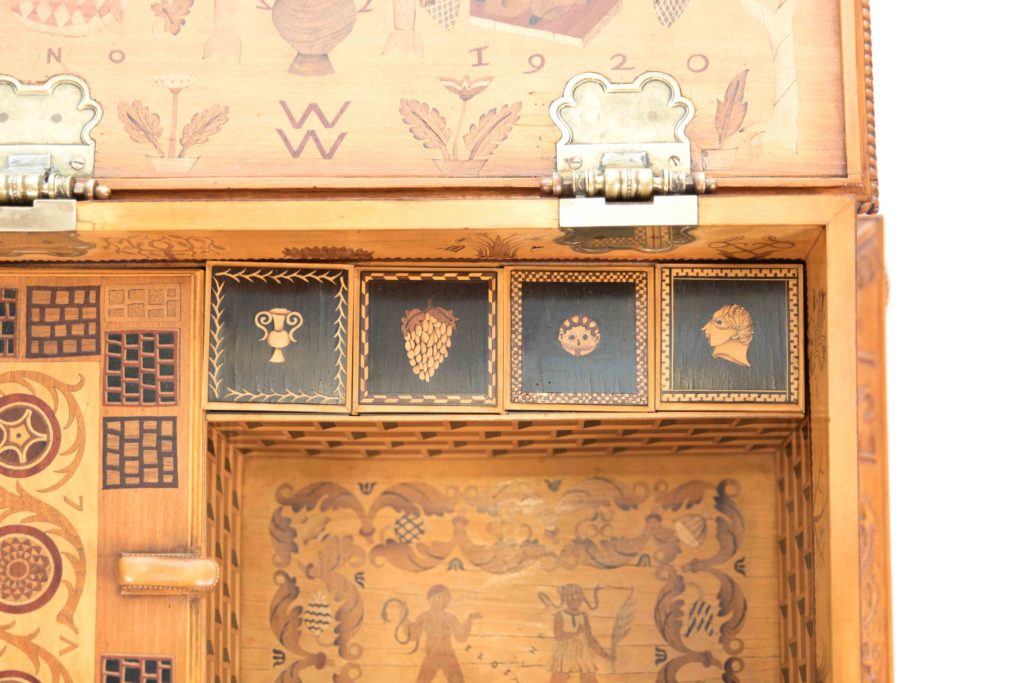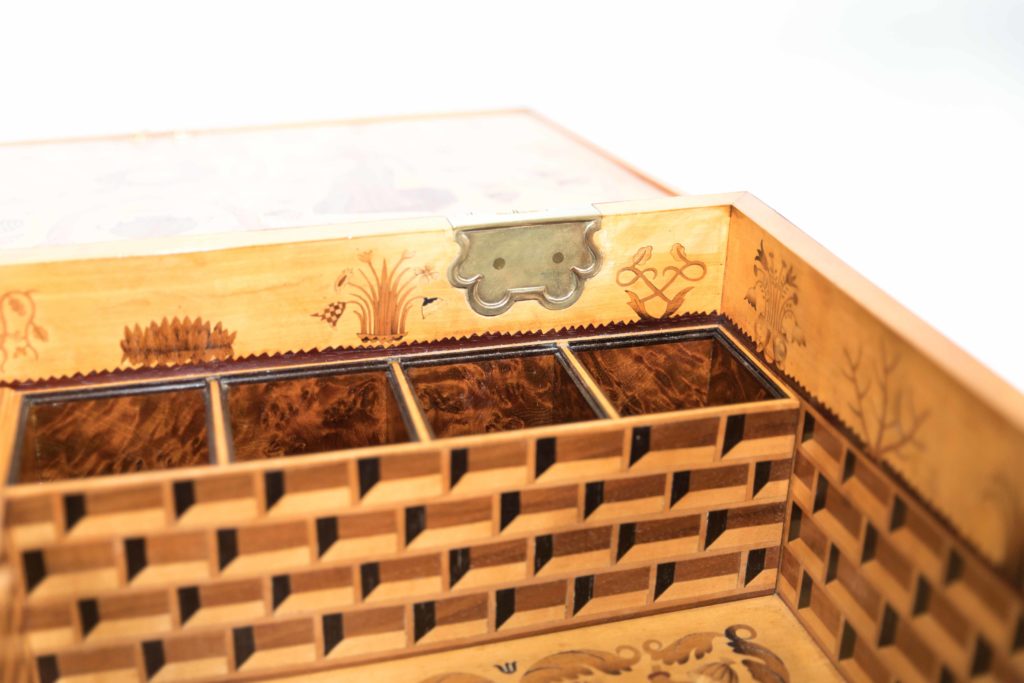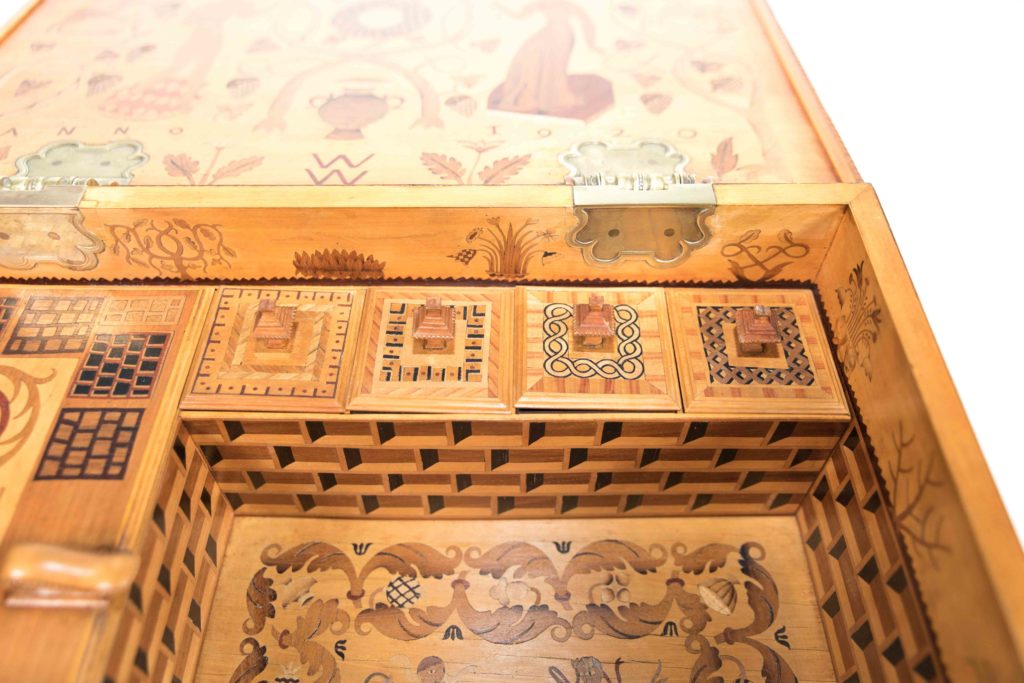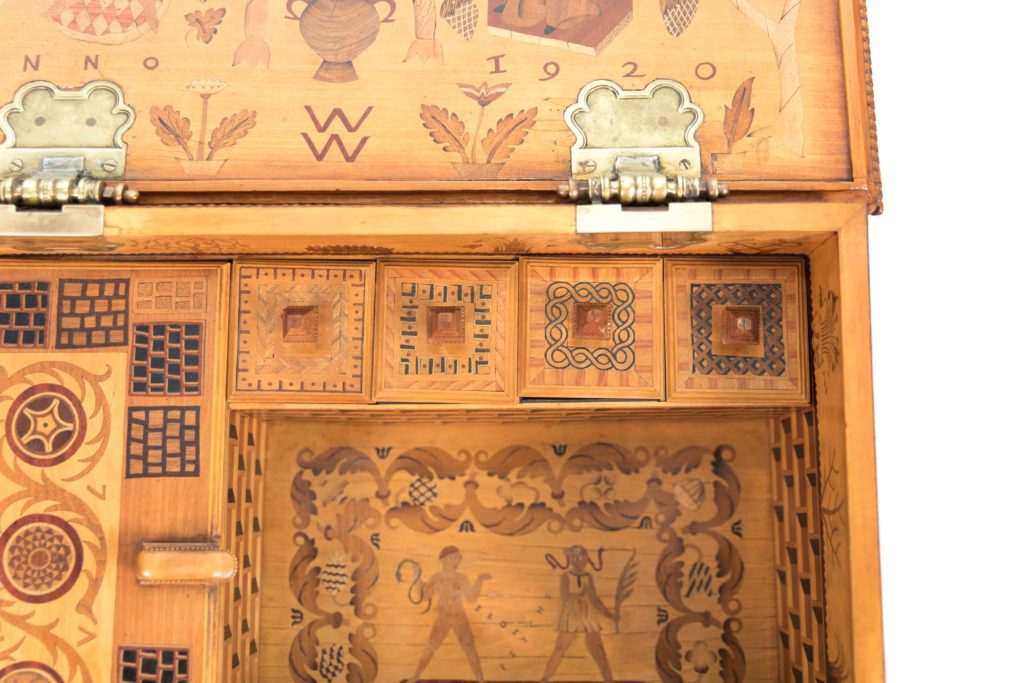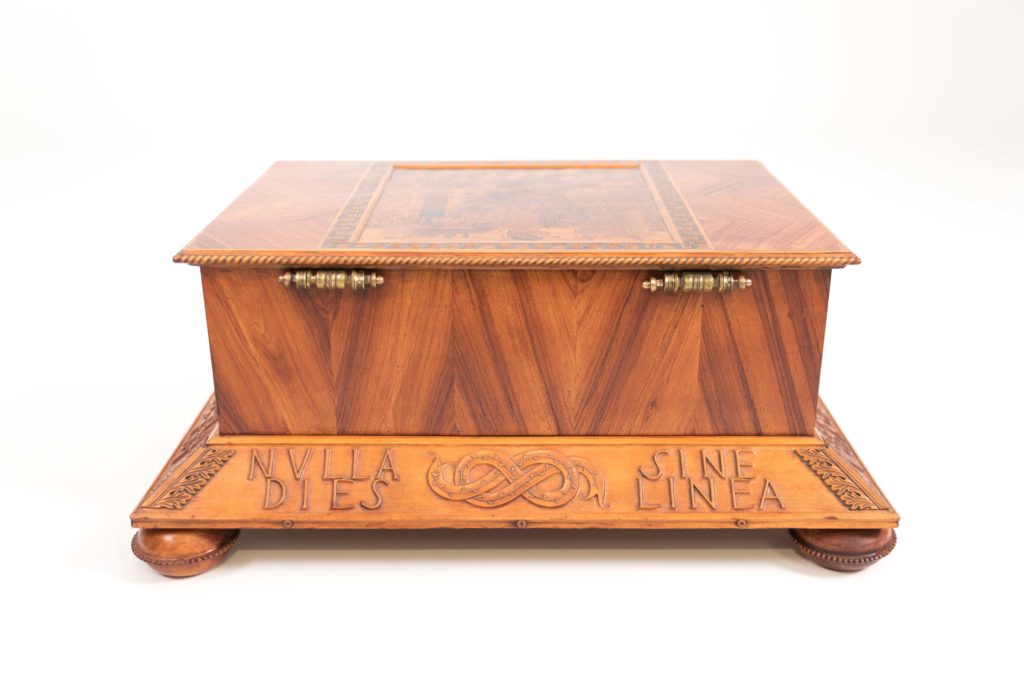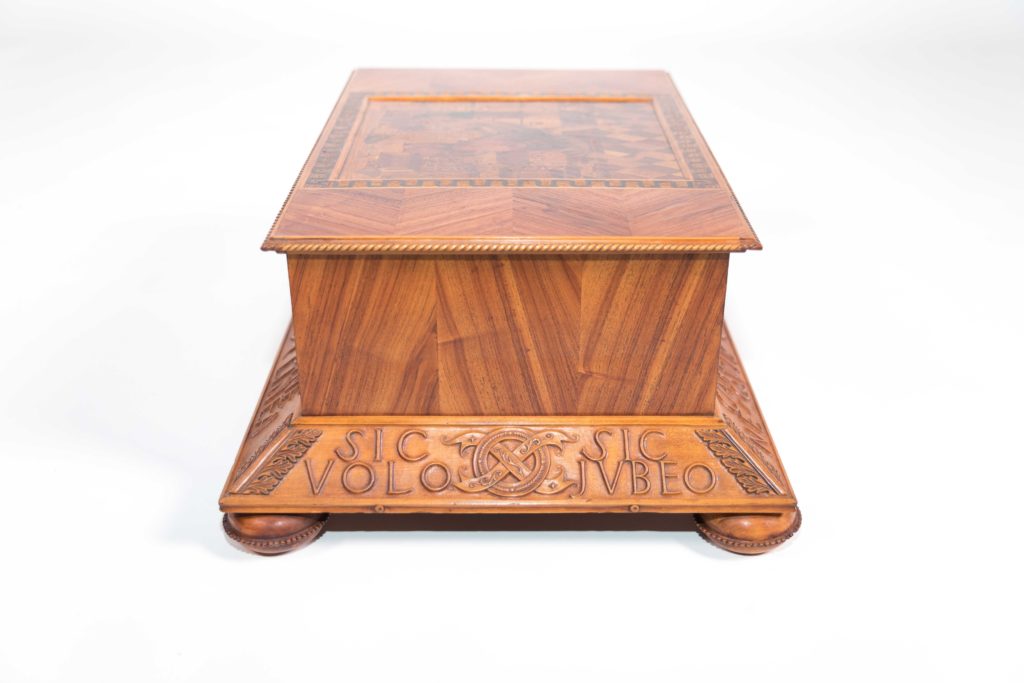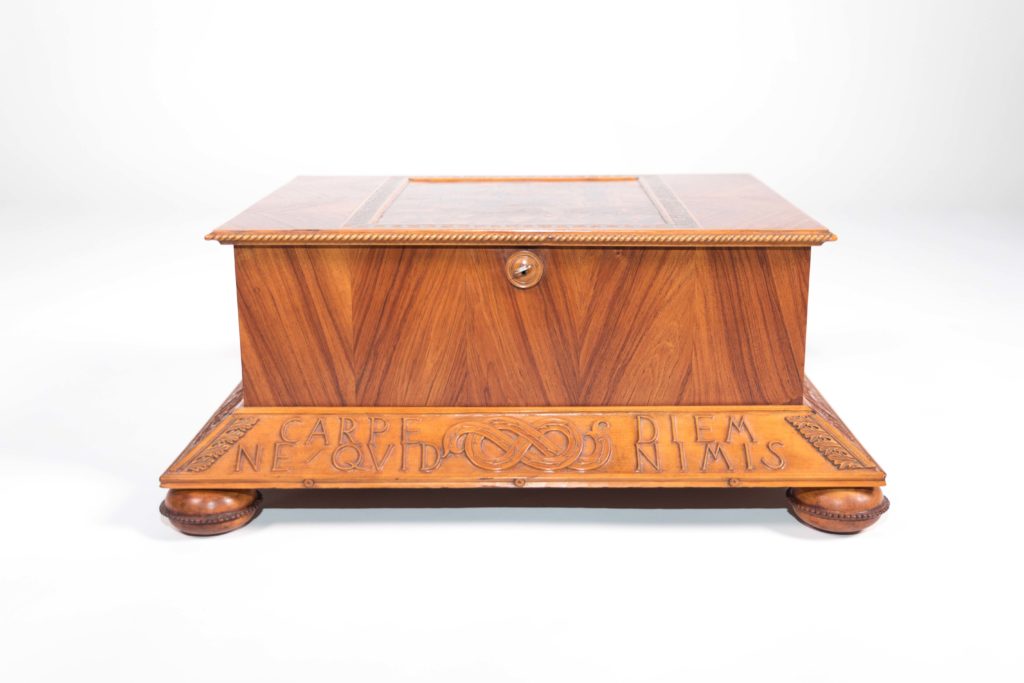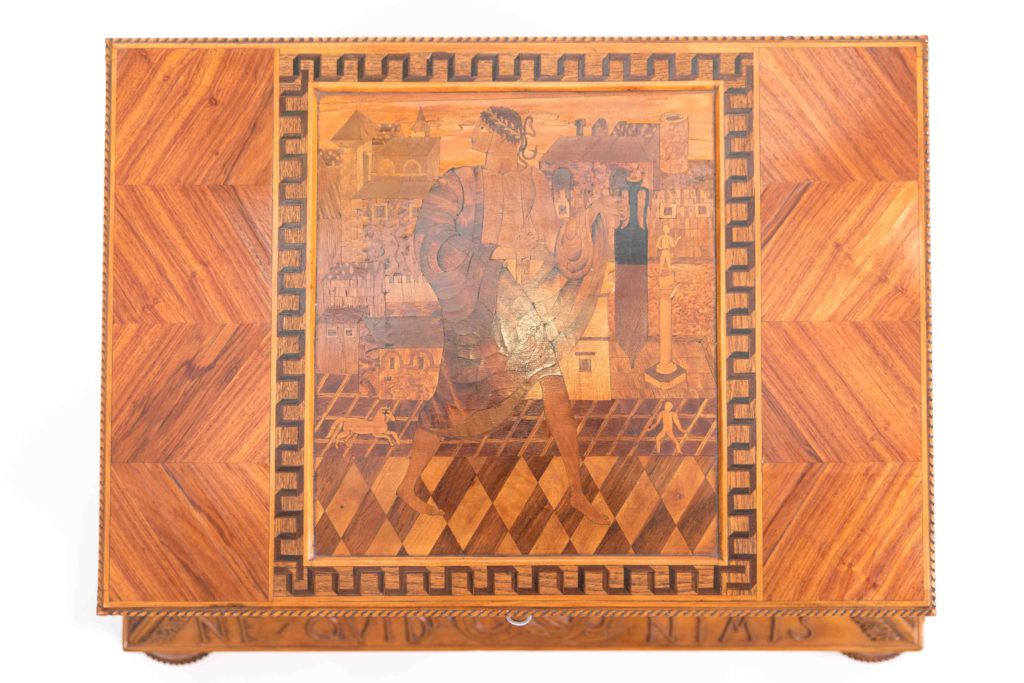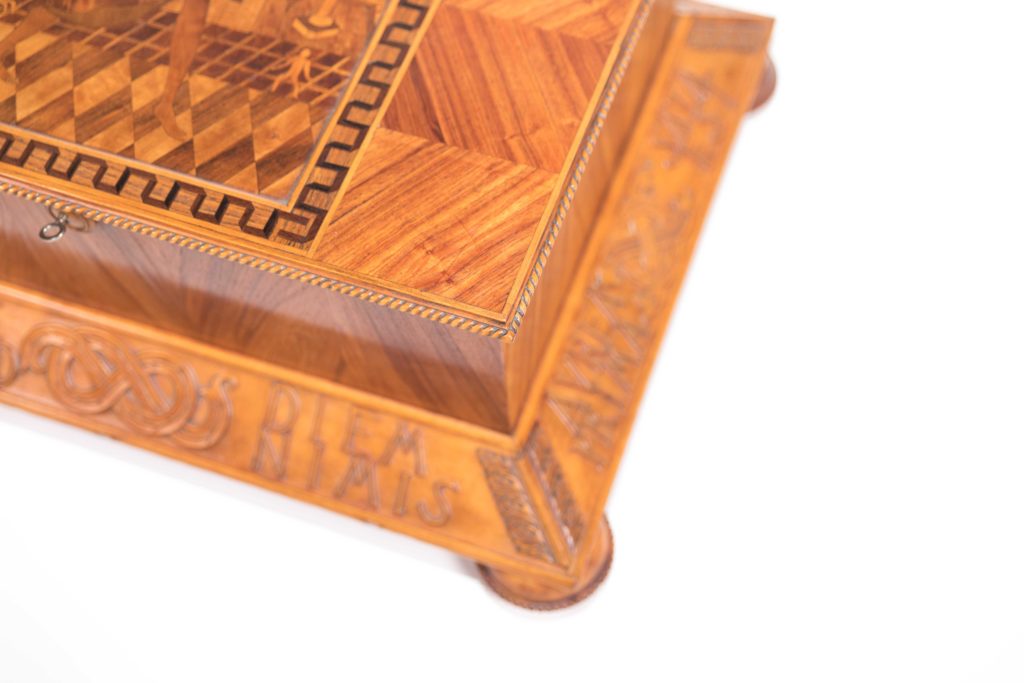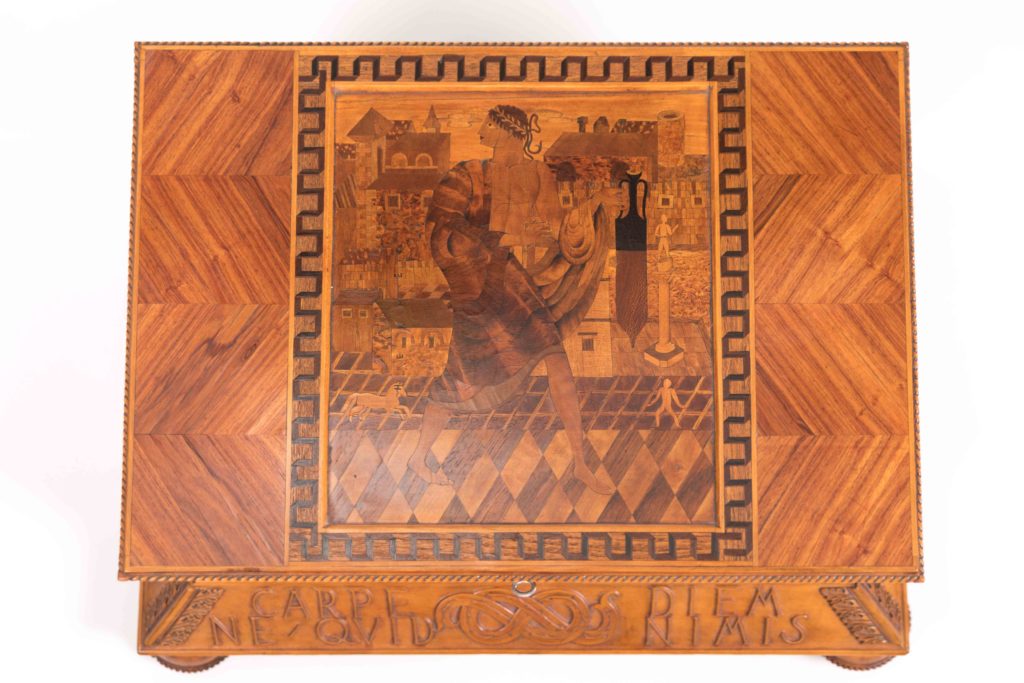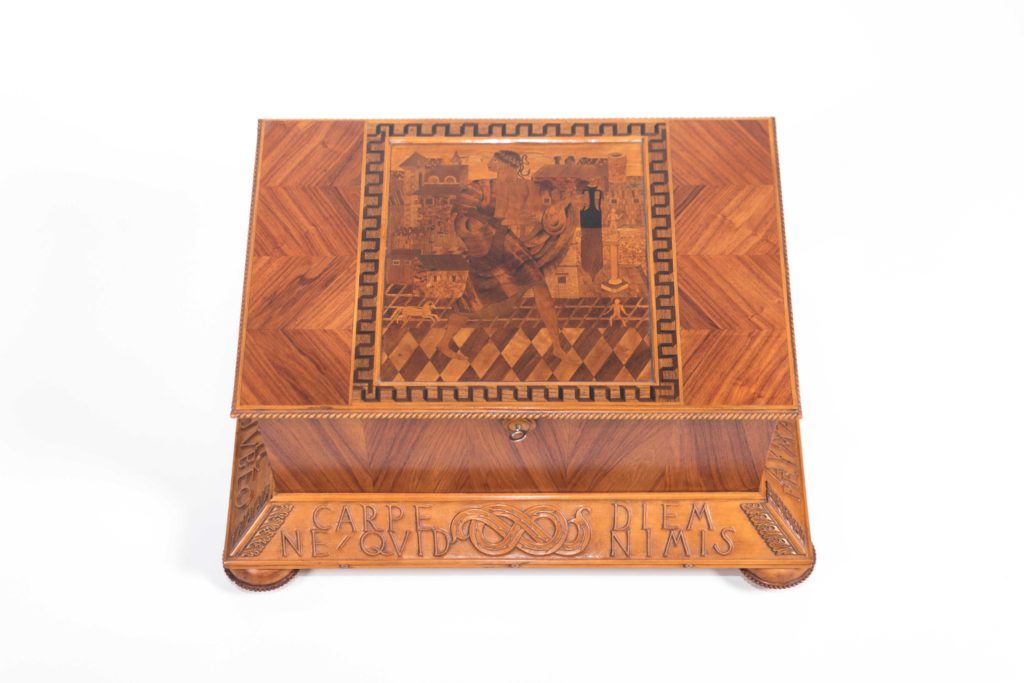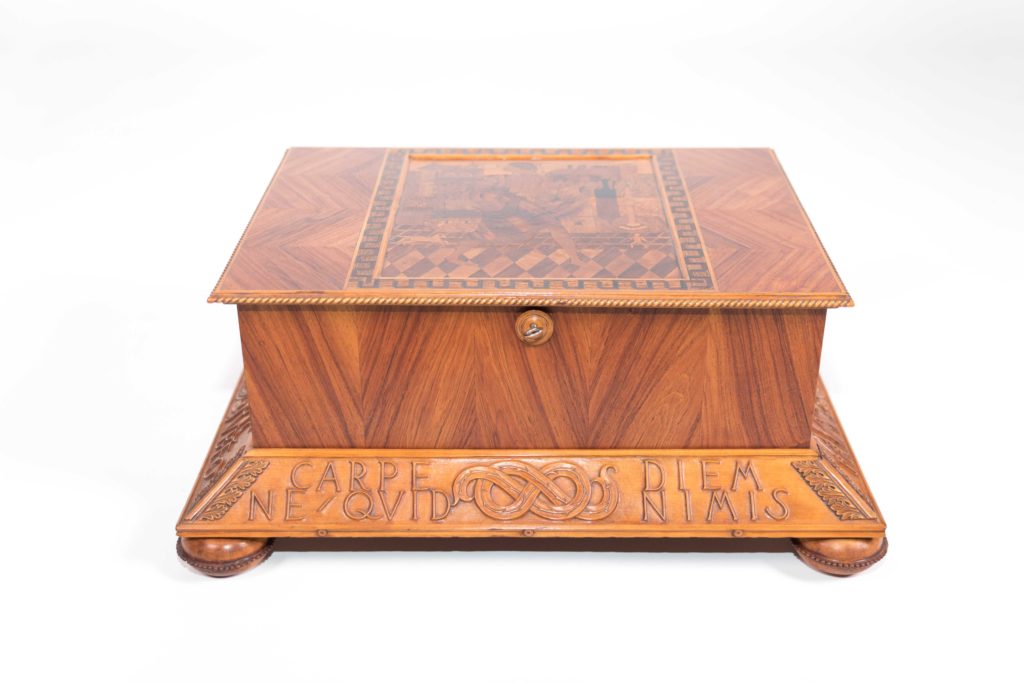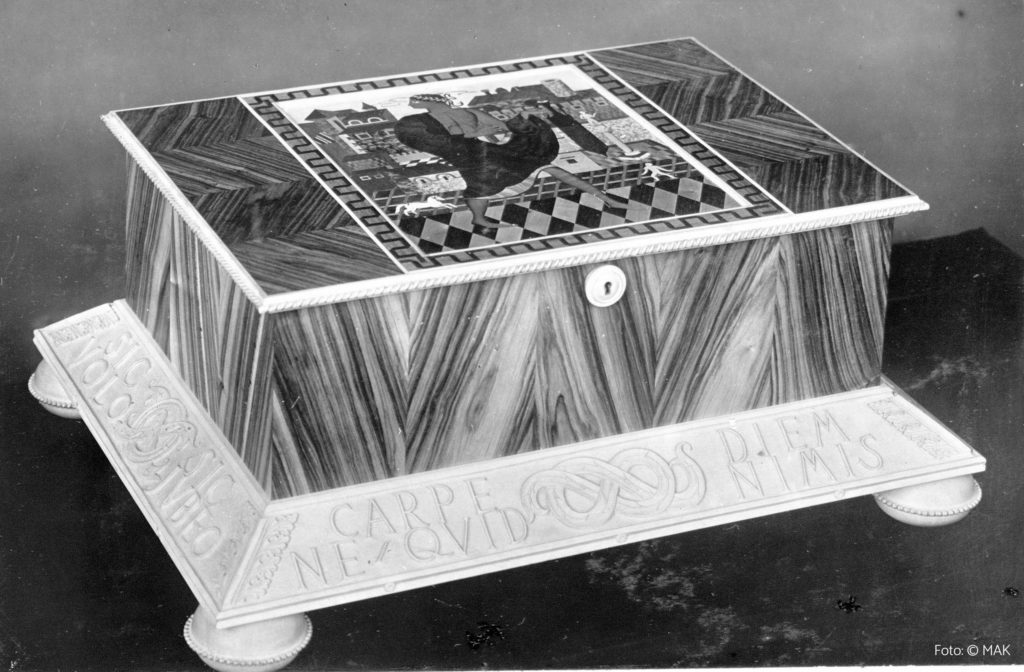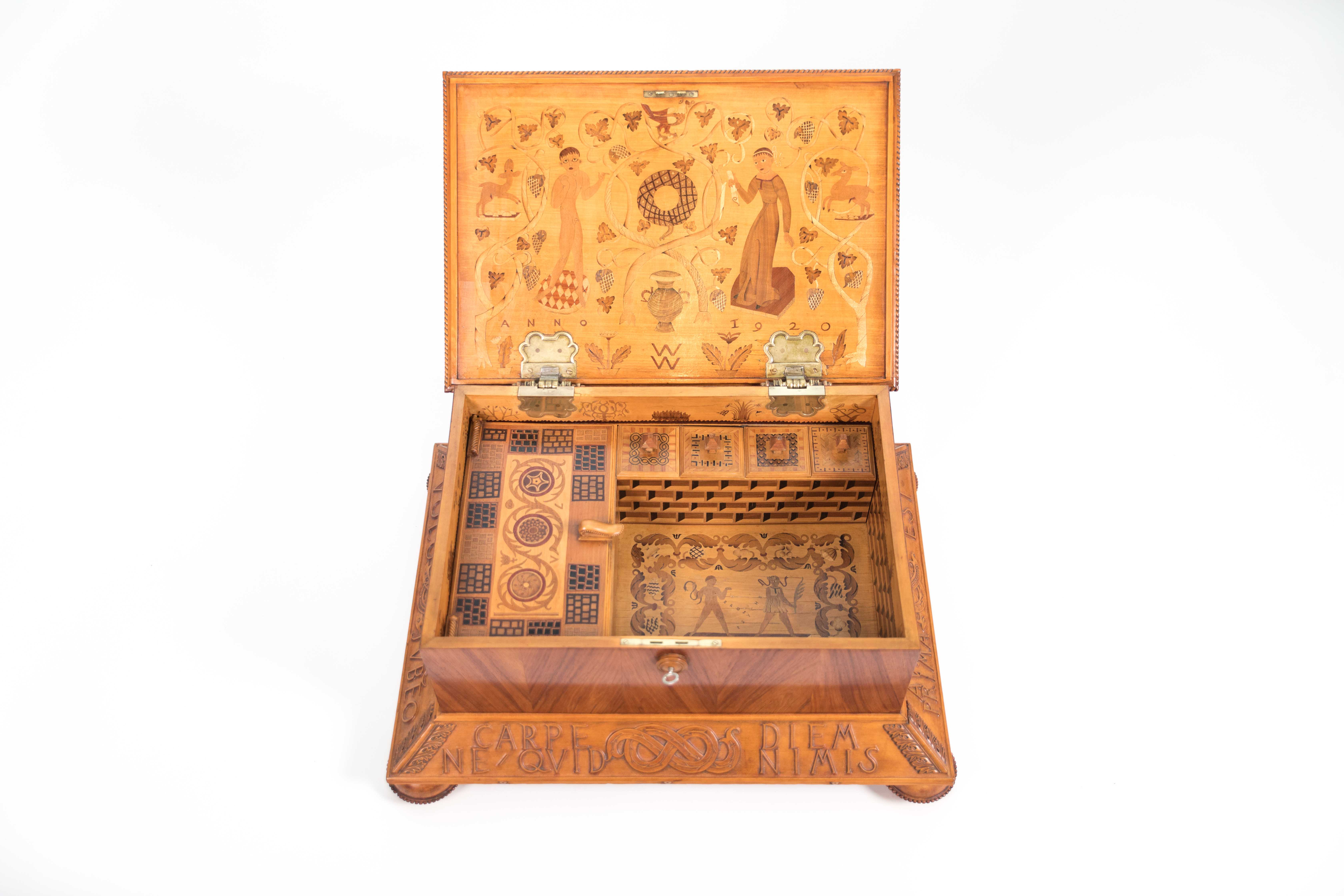
Unique museum specimen of a casket by Viktor Lurje for the Wiener Werkstätten (1920)
The Viennese architect and craftsman Viktor Lurje (1883 – 1944) is one of the most famous representatives of the Wiener Werkstätte. As a member of the study and friend circle of Oskar Strnad and Josef Frank, he concentrated on interior design, and arts and crafts. Already the first joint project of these friends, a garden hall in the winter exhibition of the Museum of Art and Industry in Vienna in 1911/12, was groundbreaking for Lurje’s entire oeuvre, with its strong coloring and expansive decor.
An outstanding design as a gem for connoisseurs
The casket, designed by Viktor Lurje, is an elaborately crafted container for storing particular belongings. It is made of different types of wood and is an unmistakable and unique piece of work by the Wiener Werkstätte. In addition to the Latin aphorisms, which are artfully worked into the base, the inlays of the box tell the myth of Eros and Psyche. Lurje chose to represent this scene, after being inspired by the opera of the same name by Ludomir Różycki. The lid is decorated with a representation of Hermes.
A playful ornament in the style of Ludomir Różycki
The myth of Eros and Psyche is a widespread subject in the visual arts, and a popular theme in music as well as in musical theatre. It depicts aspects of the mythical romantic entanglement between the god Amor and the mortal king’s daughter, Psyche, who is eventually accepted among the immortals. Many paintings, sculptures and musical pieces deal with the couple, including the production by Ludomir Rózycki. His Eros and Psyche is a fantastic opera in five acts and a postlude by Ludomir Różycki. The first performance took place in German on March 10, 1917 in the Wroclaw City Theatre.
An everyday design as a work of art: Wiener Werkstätte
In 1903 the architect Josef Hoffmann, the graphic artist and painter Koloman Moser and the patron Fritz Waerndorfer decided to found the now world-famous Association for Arts and Crafts Wiener Werkstätte (1903-1932). This “Production Cooperative of Craftsmen” set out to produce artistically high-quality crafts in all areas of everyday use – furniture, architecture, porcelain, glass and fashion. With its interdisciplinary approach and forward-looking designs, the Wiener Werkstätte has had a lasting influence on the history of design. To this day, it continues to provide essential impulses in aesthetic questions and is an indispensable force in the field of younger arts and crafts and design.
A master of decor: Viktor Lurje
Viktor Lurje was a typical representative of the “Viennese living space culture” of the interwar period. Lurje’s objects are characterized by a distinctly decorative elaboration, whereby the artist placed particular emphasis on the technique of inlay painting, which was highly valued at that time. Lurje also developed his own technique of stucco decoration. He developed a wide range and designed posters as well as designs for ceramics, glass and textiles. A large part of his interior decoration in various museums (Landesmuseum Kassel, 1912), hotels and restaurants is characterized by its unmistakable figural decor.
The casket as reflected in contemporary publications
In addition to the extraordinary design, the report refers to its singularity as an unmistakable unique item. The identical image is only available here as a silver gelatine print. Probably the first publication of the casket in the monthly magazine Kunst und Kunsthandwerk under the topic “Kunstschau” (“Art Show”) on the economic position of Austrian arts and crafts.
A sense for the special: the universal genius Max Wolf
The decorative casket once belonged to Max Wolf, who visibly liked the works of the Wiener Werkstätte. During his studies in New York, he would meet during the week with publishers of magazines, writers, artists and Joseph Hoffmann, the founder of the Wiener Werkstätte. Wolf, the son of a businessman born in Vienna, acquired a total of seven doctorates, became a university professor and ran a practice as a gynecologist and ENT physician. In addition, he was a contracted doctor for the Metropolitan Opera. As of the 1930s, he devoted himself primarily to enzyme research, and, created a combination preparation to combat inflammation and pain: Wobenzym With help of his assistant, Dr. Helen Benitez, he developed the drug at Columbia University in New York. Wolf’s merits and the spectacular life of this Jewish universal genius are closely linked to New York’s urban history. He spent his last years with his second wife, in the German Southeastern Palatinate (Vorderpfalz), before passing away in 1976, at the age of 91.


